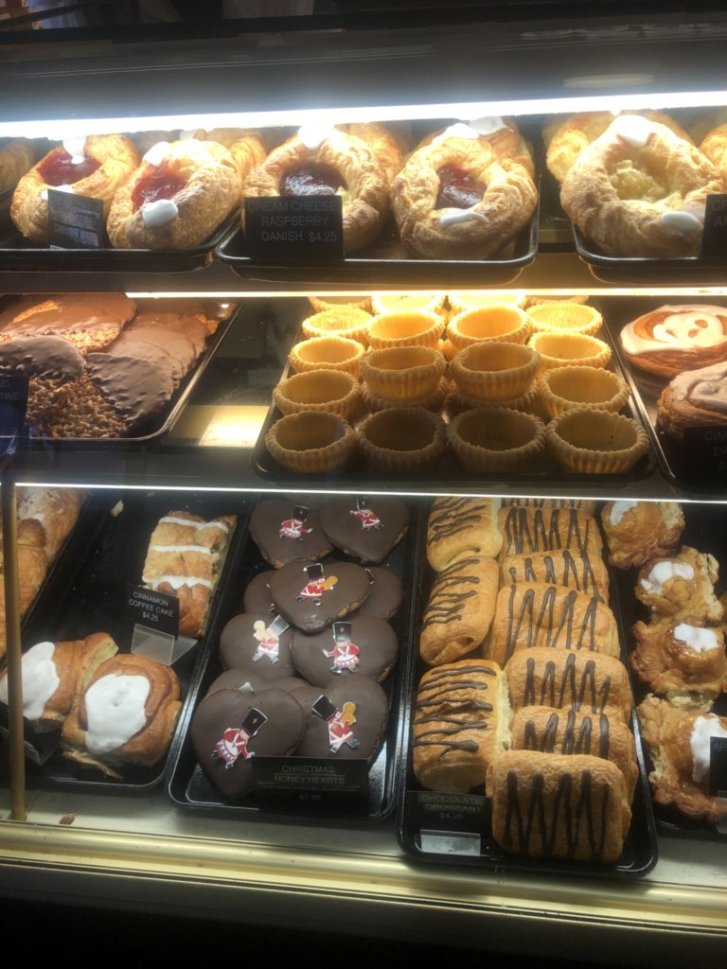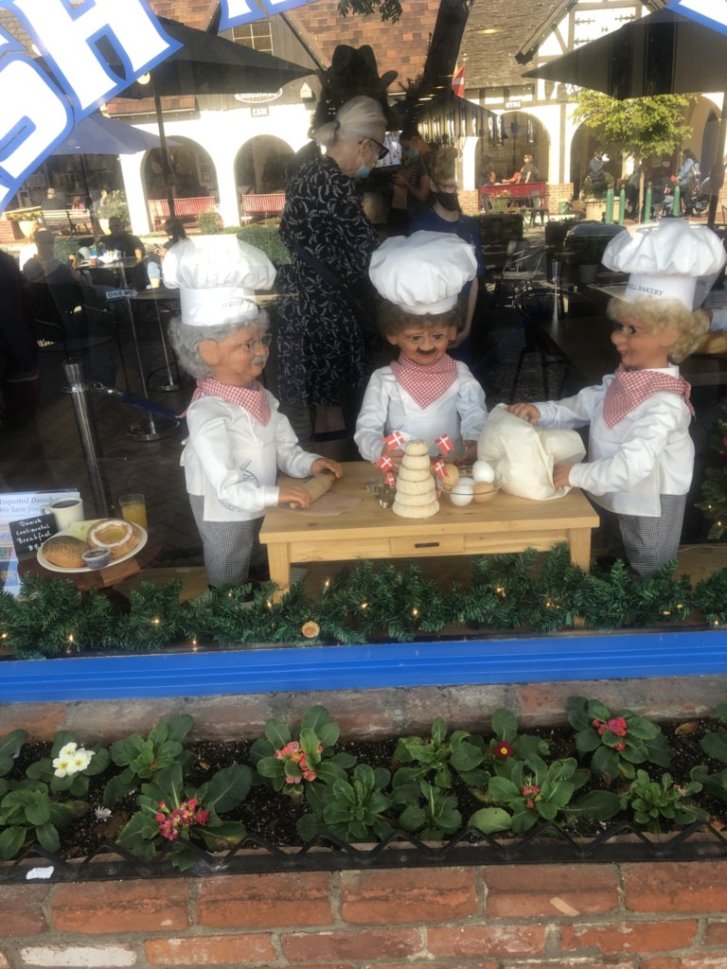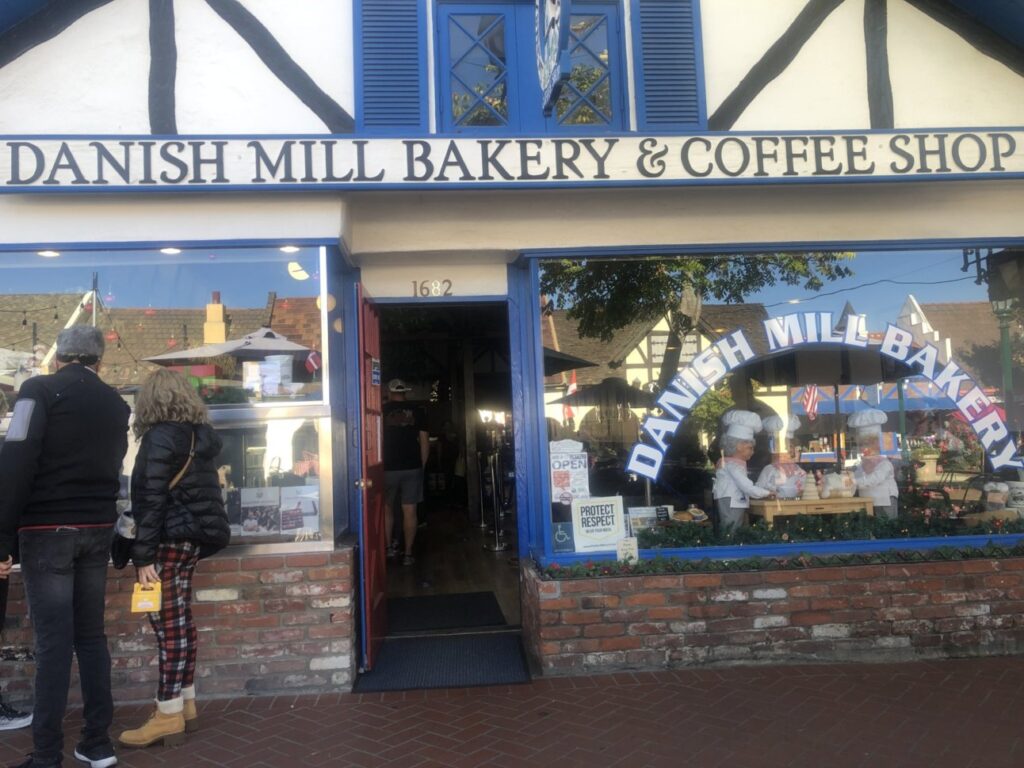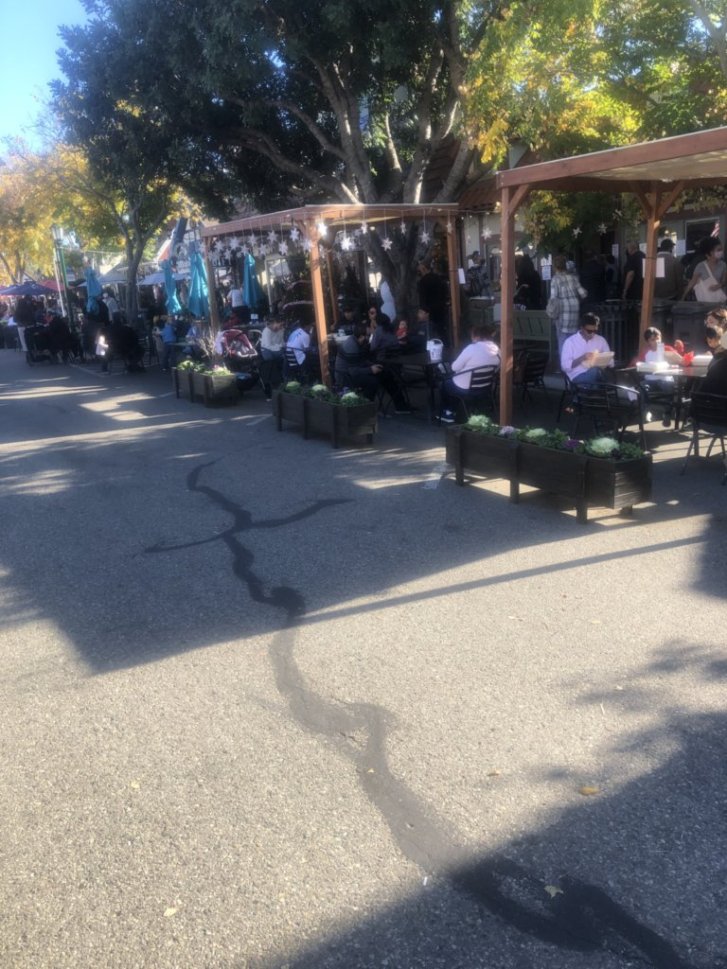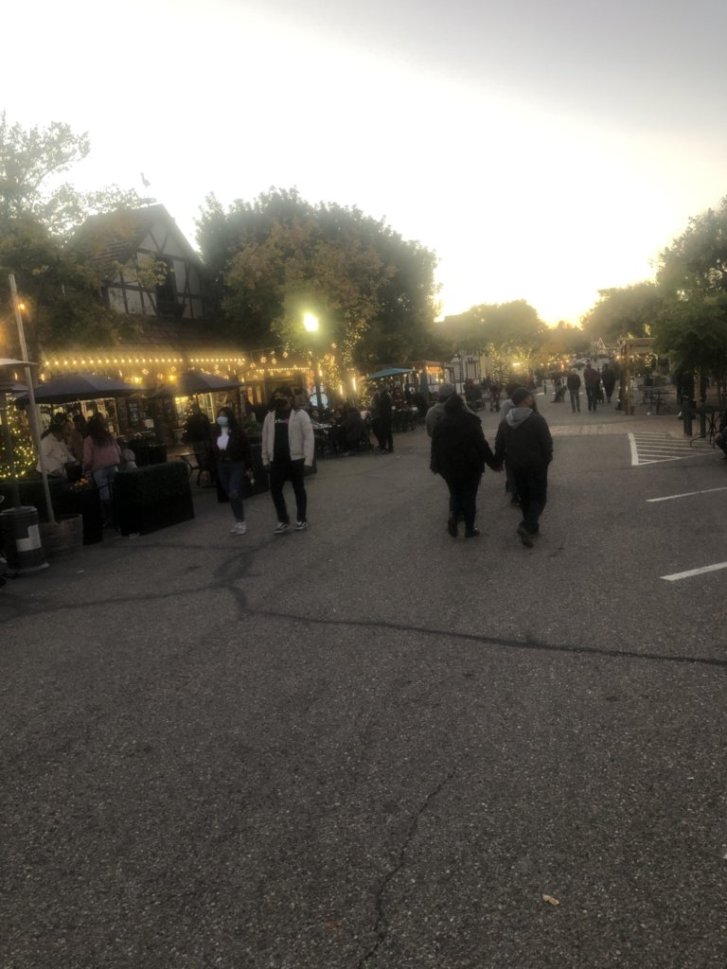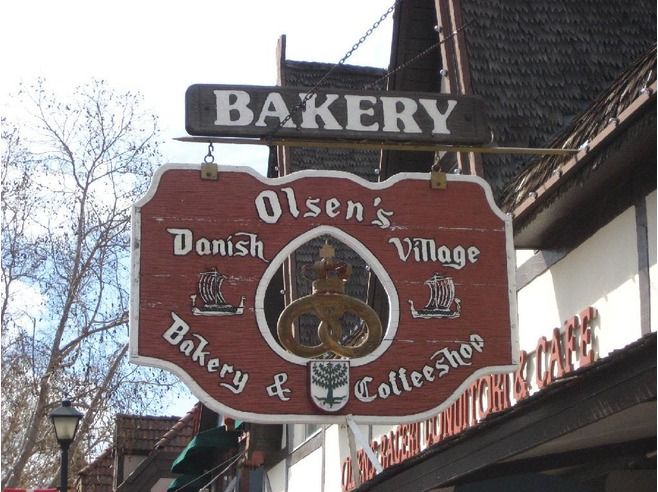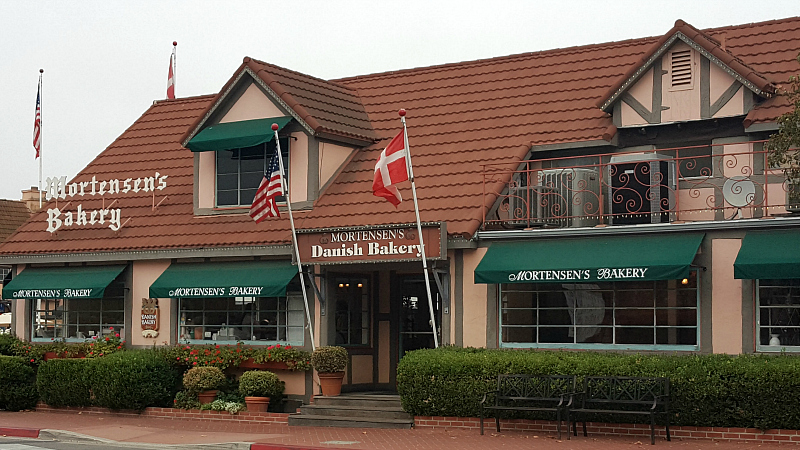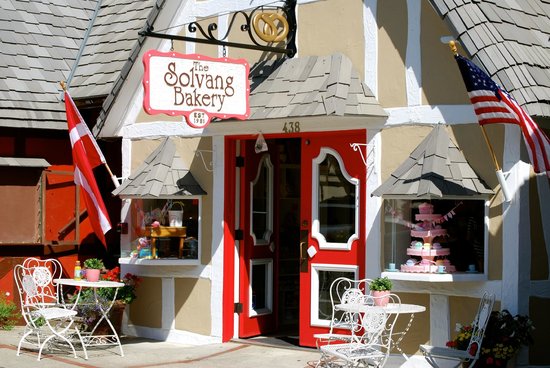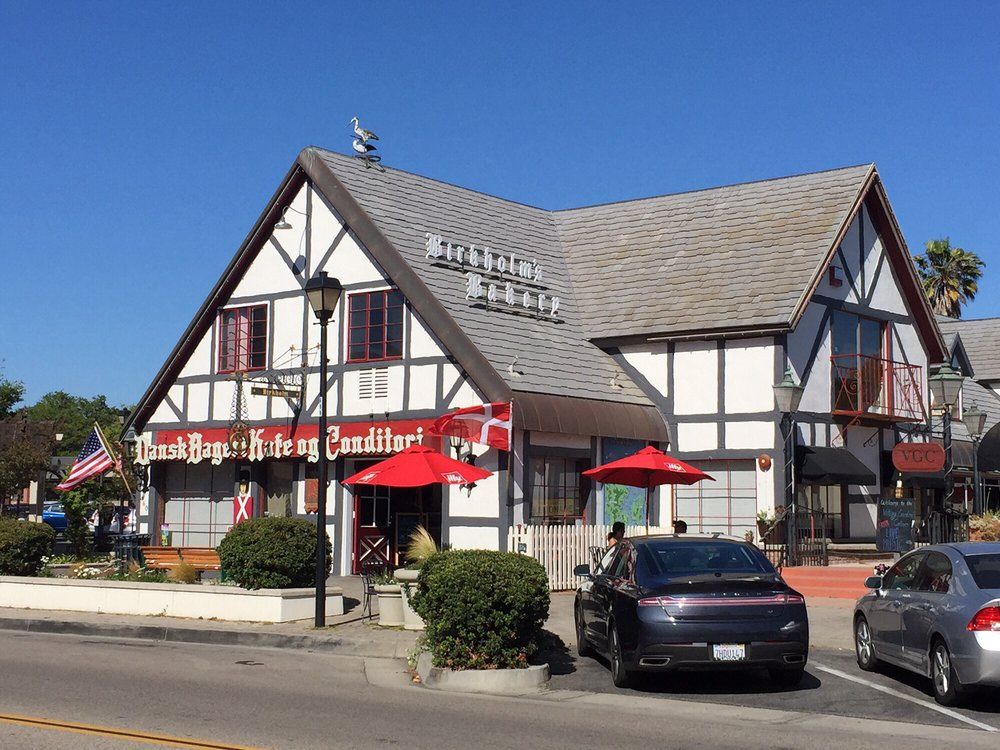
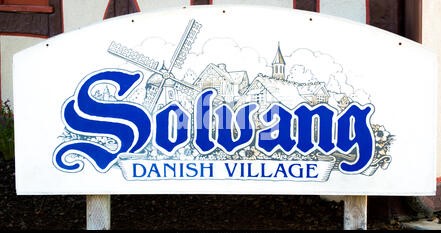
The closure of Atterdag College surely marked the end of an era. All through the 1930s there had been subtle indications that the Solvang residents were leaning more heavily towards their Danish roots. Solvang’s Danish population, at that time, was about 2/3 of the whole, but that number had been steadily declining, almost from the beginning. Perhaps this was a knee jerk reaction to the shrinking population. Even though the Danes had wanted to blend in and be like any other American citizen, they were also proud of their heritage. After all, Solvang had been established as a Danish outpost and maybe the residents now wanted to remind the rest of the country of this fact. In any event, their unique “Danishness” had been slowly seeping out all through the 1930s.
Two primary economic factors helped to push Solvang towards an uncertain future. The first was the decline of the small farm in America. It had simply become much too difficult to eke out a living on a small plot of land. Many larger Danish communities in the Midwest had already suffered from this. Small farms had been absorbed into larger combines and the families had opted for urban living. Many of the young adults had attended American colleges, causing the once popular and progressive Danish folk schools to close their doors. The last of these closed for good in the late 1930s. From there the young Danish-Americans had chosen career paths outside of their home communities, never to return. Being isolated from the country at large had slowed this process in Solvang, but not stopped it. The town business leaders saw this cycle repeating itself yet again in their isolated little hamlet and knew their fate, unless something could be done to alter the course. The second factor was the towns silver anniversary in 1936. To celebrate, the town leaders decided to throw a massive three-day party. The festivities began on June 5th and included parades, speeches, folk dancing, gymnastic demonstrations, amateur theater, choral singing, and barbecues. One of the highlights was a pageant written by the local pastor called “The Last of the Vikings”. It featured fifty-eight local performers dressed in full Viking garb including chainmail, swords, battle axes, and Viking horned helmets. The production included several large kegs of wine placed on stage that the actors drank while performing. As it turned out, the wine was the real thing, which meant for a very spirited production, and a good time had by all. It was such a huge success, that the town fathers decided to have the celebration again the following July. After that it became an annual fixture, occurring every year through 1958, not only reinforcing their patriotic feelings towards Denmark and all things Danish, but also attracting visitors from the outside to see what all the noise was about. The message was clear. people were curious about this isolated little hamlet and tourism might be an answer.
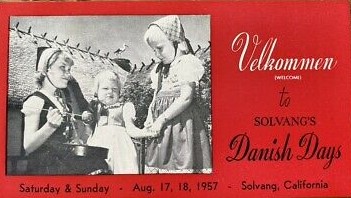
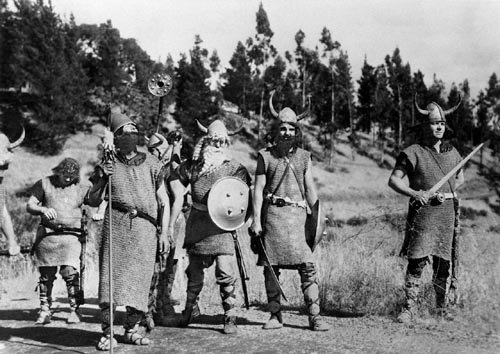
Most, if not all, of Solvang’s leading businessmen had attended classes at Atterdag College. An out-of-the-box, progressive type of thinking had been ingrained into them and they now relied on that to look at the future and how they might alter their seemingly inevitable destiny. They realized their small Danish outpost was dying a lingering death and a move to tourism might be the best option for Solvang as a whole. As early as 1939, it had been proposed that the town establish a resort and call it the Danish Village. Unfortunately, the combination of cost and the advent of WWII permanently dashed any hopes of the project coming to fruition.
Still, there were sporadic outward signs of Danish architectural style. The first building to truly be modeled on that style was the Lutheran Church, which was built in 1928. In 1931, Alfred Petersen was one of the first to adopt the Danish half-timber design which he incorporated into his home. In 1936 Einer Johnsen was the first businessman on Main Street to go Danish when he remodeled his combination jewelry store and radio shop, adding a new façade in the same half-timber design. In 1939 Hans Knudsen also used the design when he added a new façade to his coffee shop, the Sunny Corner. It was quickly pointed out that, while aesthetically pleasing, the only thing Danish about the buildings on Main Street were their façades. Perhaps a bit of hocus pocus to attract the tourists? In 1940 Ferdinand Sorensen, a local plumber and metalsmith who adored all things Dutch, began work on his Danish provincial style home. He gleaned his ideas from a visit to the homeland shortly before the start of WWII. Adding elements of Danish fairy tales and whimsy, after five years, he had mostly completed MØllebaken, as he called it, or Mill on the Hill. For many years after, he continued to add smaller elements to the design. In 1946 he built the first of Solvang’s faux windmills next to his home. Outwardly, it appeared to look like a working windmill from the old country but inside, it was a small residential apartment. One forward thinking businesswoman was Lyla (Maxwell) Solum. She thought Solvang had potential as a tourist stop and in 1941, she opened her Royal Copenhagen Shop, a touristy gift shop featuring all things Dutch. It was an incredibly forward-thinking idea. A great advantage she enjoyed for many years, which allowed the shop to become firmly established, was a lack of competition. With nearly a decade head start, the shop remained a town of fixture, with only one change in ownership, for seventy-one years.
Post WWII, Solvang began to experience a boom. There was a new, post-war enthusiasm, coupled with an expanding economy. Servicemen from around the country that had been stationed at, what is now Vandenberg Air Force Base, remembered the area. Many returned with their families. After years of gas rationing and dealing with the Great Depression, people were itching to get out and see new places, experience new things. First it was residents of nearby Santa Barbara that began to make the short drive to one of Solvang’s several bakeries, or to buy its quality meats. Solvang was starting to “appear on the map”.
Then, in 1947, fate intervened in the form of an article in the Saturday Evening Post entitled “Little Denmark.” The in-depth article came complete with color photographs and the author, Dean Jennings, was obviously enamored of Solvang and gave the town a glowing review, emphasizing its’ quaint rural charms and Danish appearance. Although, in reality, only a few of the buildings appeared to be in the Danish style of architecture it was enough to impress Jennings. He probably overstated the facts but suddenly everyone between Los Angeles and San Francisco wanted to be in Solvang.
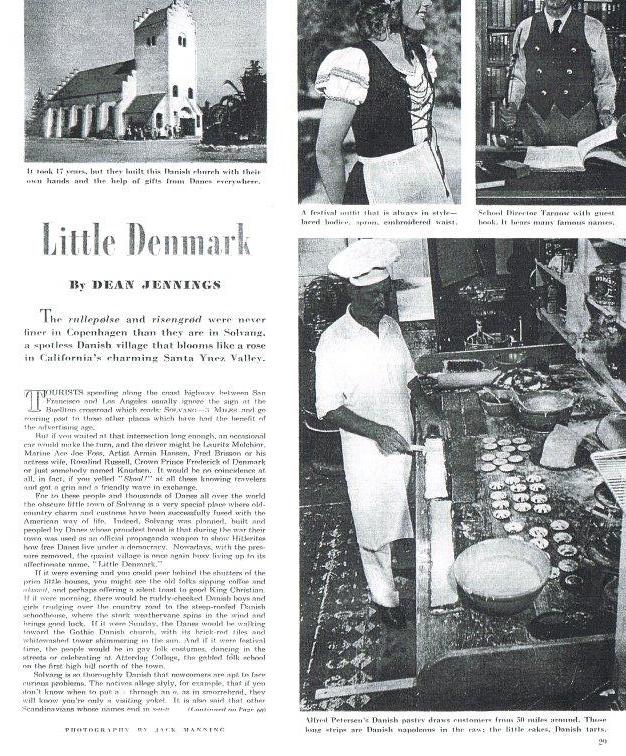
Some even wanted to stay. Property values began to increase, and many struggling farmers took the opportunity to break up their farms and sell the land to these newcomers.
There was just one thing for which these new residents had not prepared themselves. This is the fact that there were roughly two dozen dairies in the area. Anyone that has ever lived or traveled downwind of a dairy will understand the dilemma in which they found themselves. Complaints started almost immediately. But what were the dairy farmers to do? For one, they had lived with that unique smell all their lives. Their initial response had probably been “Smell! What smell?” But even acknowledging the problem didn’t solve it. Another of my favorite real estate sayings is buyer beware. The dairy farmers had been there first. It was a war of words that went on for decades. The fact of the matter was all the homeowners really had to do was sit back and wait. The farmers and dairymen had other problems. Large tracts of farmland were now being fenced off for new residences, making it difficult, re more expensive, to get from one field to another. With less acreage being farmed there was less local grain available, and the dairyman had to absorb the cost of bringing grain in from the outside. Soon, the creameries in the area began to close as well, forcing dairy farmers to bear the additional expense of shipping their product to Los Angeles. With costs spiraling out of control, the dairyman could either close or they could move their operations to the nearby San Joaquin Valley. A few saw the writing on the wall and got out right away. The others managed to hang on for another decade but then, in the 1960s, half a dozen of them closed or moved. More dairies closed down throughout the 1970s and 80s and 90s. The last dairy farm in the area, the Jacobsen Family Dairy, closed in 2003. And so, another Solvang tradition came to an end.
But new traditions were taking hold. The end of the war and the article in the Saturday Evening Post combined with a strong economy to make Solvang a tremendous tourist attraction. Responding to this, local businessmen yearned to give the tourists what they expected, which was a Danish village. In the late 1940s the Paaske brothers and Ferdinand Sorensen, he of the Mill on the Hill fame, combined their talents to build Copenhagen Square, recreating the look of a Danish Market Square. In 1950 Ernst Pedersen opened the Iron Art Gift Shop in Copenhagen Square. The shop still operates as a family business to this day, 71 years later. In 1953 several of the towns’ streets were renamed to represent Solvang’s heritage and give it a more Danish sensibility. These included Spring Street, which became Atterdag Rd. Gaviota Rd. became Alisal Rd. Main St. became Copenhagen Dr. Lompoc Rd. became Mission Dr.

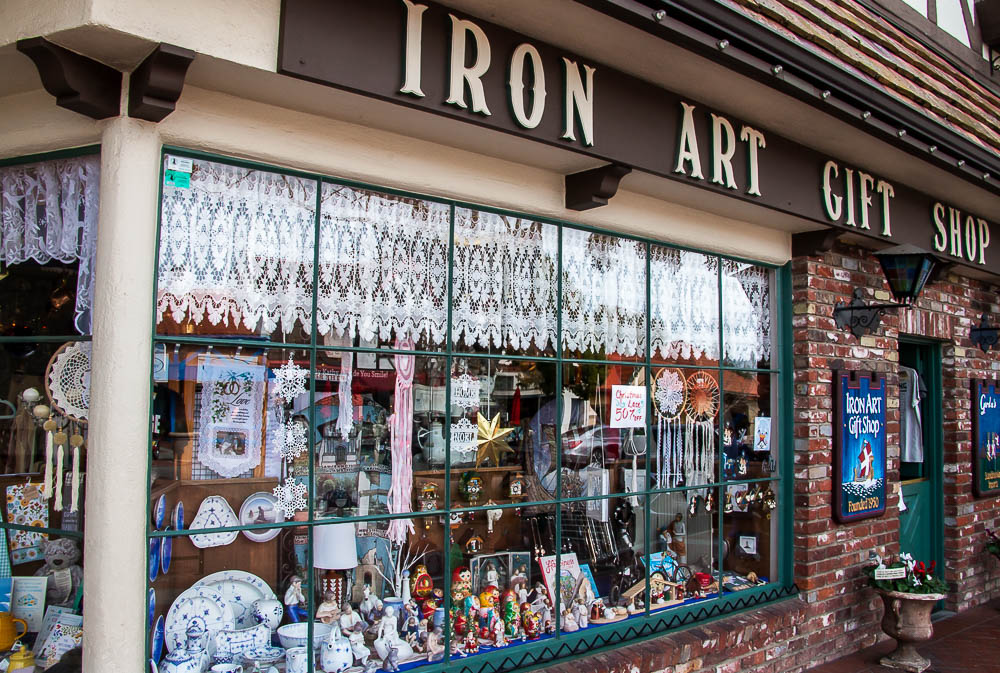
Elverhoy House deserves a special mention. Starting construction in 1950, it was handcrafted in the Danish style by Viggo and Martha Brandt-Erichsen and was their home. Viggo was a renowned painter and sculptor while Martha was a painter and art teacher. All of the doors, both inside and outside, are hand carved and there are hand painted panels throughout the house. In true Danish style it was constructed without the use of a single nail. Sadly, Viggo passed away in 1955, shortly after they completed the house. Martha continued to live there for many years. When she passed away in the 1980s, she left the house the city of Solvang to be used as a museum, which opened in 1988 and is still operating to this day. It was a primary source of information for this blog.
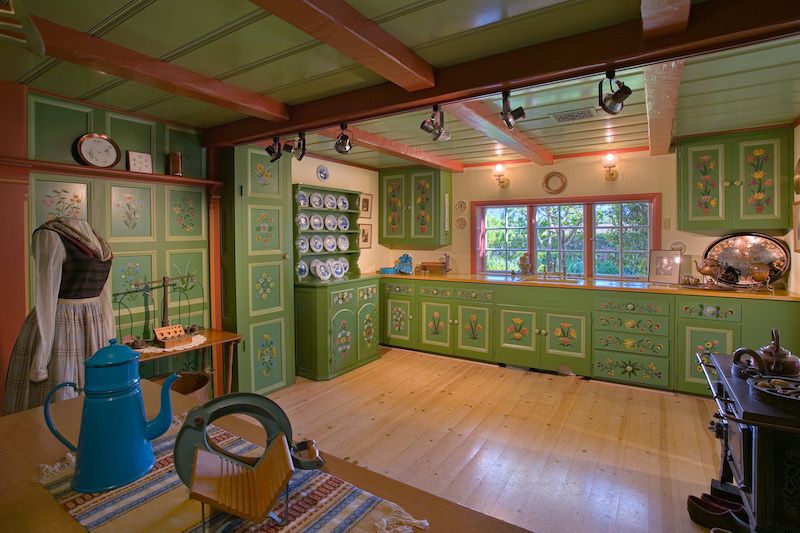
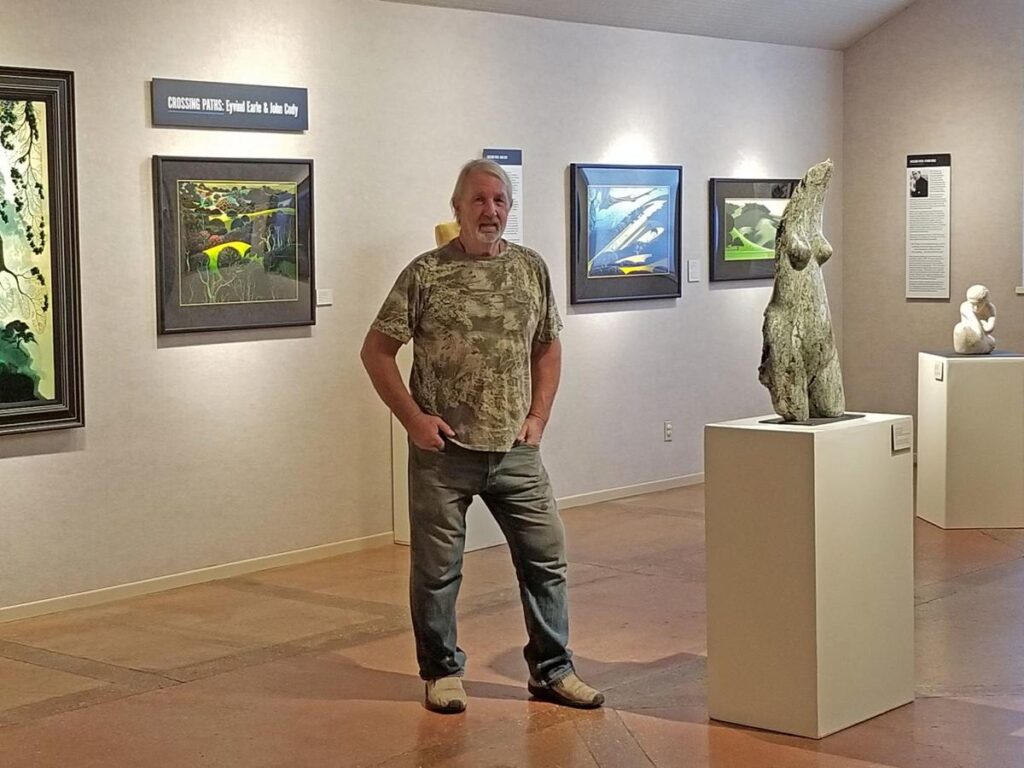
Not me in the picture. Probably the artist 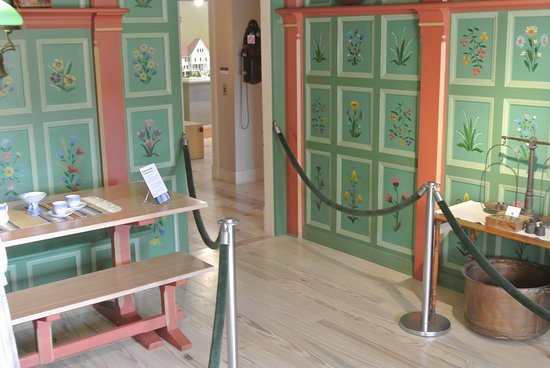
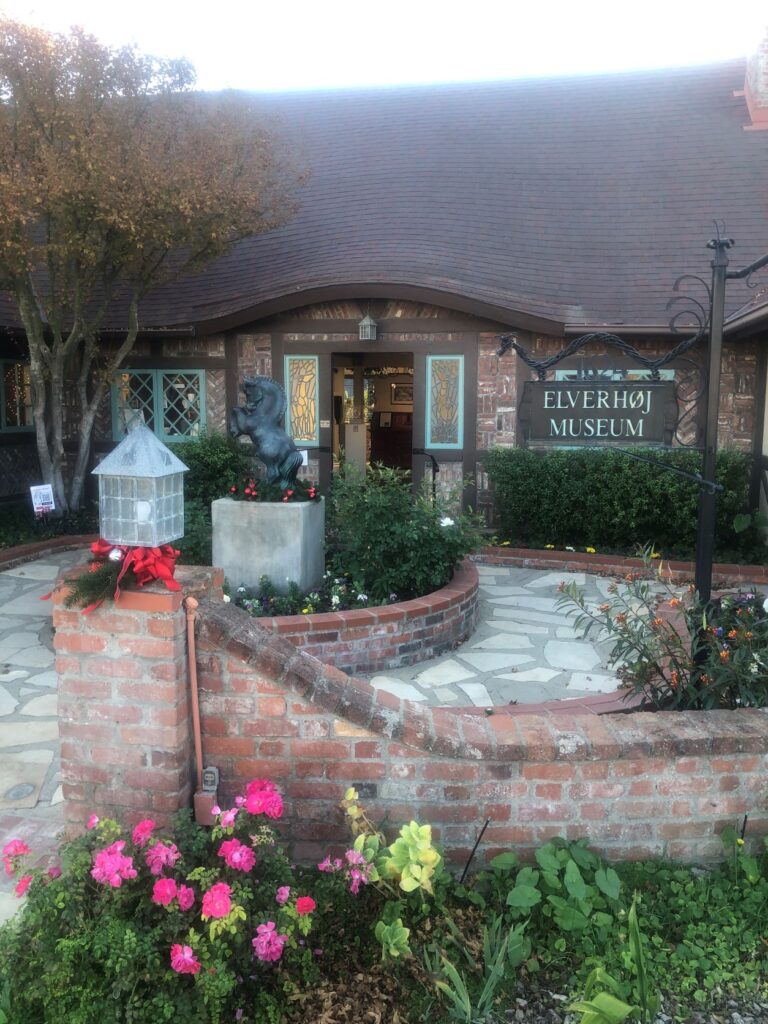
Solvang slowly came to embrace the Danish building style. The first of the town’s iconic windmills was built in 1957. A second came in 1963 and a third in 1964. Renovations and additions of this sort continued pell-mell for decades, mostly brought on by peer pressure. For example, after completing his Copenhagen Square project, Ray Paaske relentlessly cajoled other business owners to follow the new architectural trend he had helped to establish. More and more tourist-oriented businesses moved into downtown. Bakeries and restaurants were vying for newfound tourist dollars. Gift shops, jewelry stores, bookstores, clothing shops, antique dealers, and all manner of touristy bric-a-brac shops were opening up and down Copenhagen drive. Most, if not all, distinctly Danish in their offerings. There were still two problems though. First, Solvang did not offer visitors many reasons to stay late and, as they say, the sidewalks generally rolled up around 5:00 or 6:00 o’clock in the evening. Secondly, Solvang did not offer much in the way of overnight accommodations so, even had there been a reason to stay, all the Inns were full. One solution was a partnership between the Solvang Festival Theatre and the Pacific Conservatory of the Performing Arts Located in the drama department at Allan Hancock College in Santa Maria. (Whew, try to say that out loud five times!) This arrangement made Solvang a performing arts destination and gave visitors one more reason to stay late. And, once the need for accommodations had been established, local entrepreneurs were quick to start building hotels and repurposing apartment complexes for the new overnight visitors.
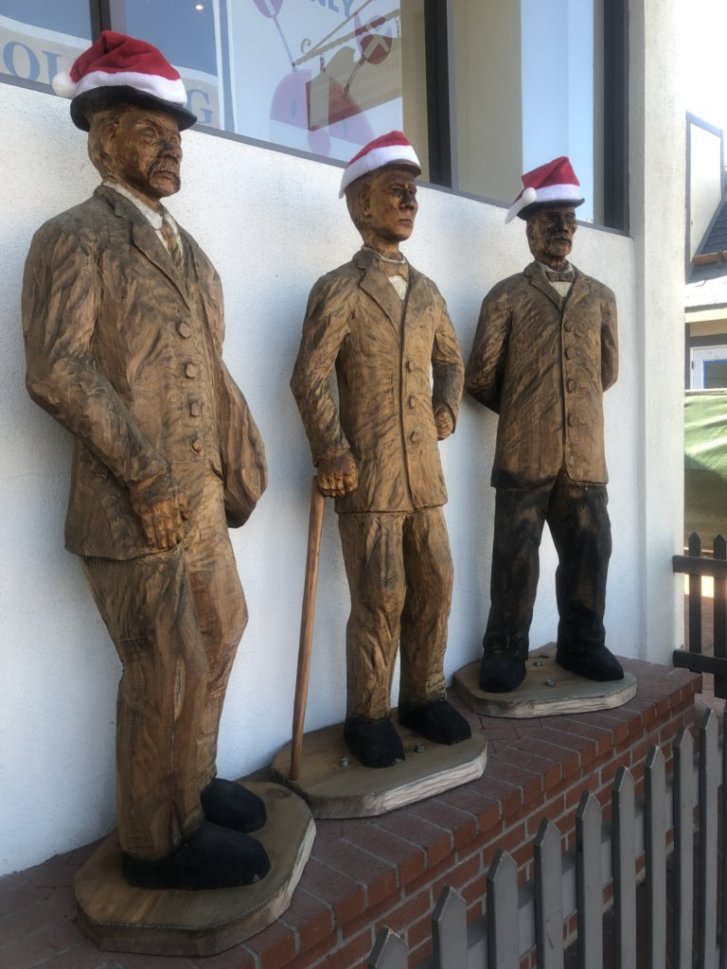
Another solution came from an unexpected resource, the farmers. A number of the local farms had begun to repurpose themselves, growing grapes and producing wine. Many of the new wineries offered tasting rooms on the premises. In the 1980s someone came up with a great idea that, instead of you coming to us, we will bring the wine to you. As a result, tasting rooms began to open along Copenhagen Dr. representing the various vintners. Connoisseurs could now take a short walk from tasting room to tasting room rather than a longer, tedious drive between vineyards. Since they were consuming more wine, this probably had the added side effect of reducing the vacancy rates among the towns new hotels.
When Solvang was finally incorporated as a town in 1985, it still had a haphazard Danish look since reconfiguring your building in the Danish style was strictly voluntary. Even then, there were no real standards. Tastes vary. One man’s Viking ship is another man’s rowboat. In some instances, the renovations looked incomplete and rather sloppy. The newly elected town council adopted strict new and detailed building codes that required anything built in downtown use a Danish architectural style as specified by the town council and planning commission. It further required that existing buildings must conform to the new codes. AND they enforced these new standards.
The end result is what we see now. Solvang looks and feels very European. Especially for someone, like moi, who has never been to Europe. It also seamlessly blends in American culture. From the original Old Mission Santa Inés, which is still standing and the only building downtown built in the Spanish style because, well, it was there first, to the four windmills, to its’ Danish provincial style architecture Solvang is a uniquely interesting and fun town to explore. In the downtown area alone it offers five bakeries, more than thirty-five restaurants, more than twenty-five beer and wine tasting rooms, and nineteen hotels all within walking distance. There are also some 150 boutiques including First Street Leather, Pavlov Art Gallery, Rasmussen’s, Renaissance Antiques, Hanson’s Clock Shop (we bought a Black Forrest cuckoo clock there years ago and it still works), Solvang Shoe Store where you can buy actual clogs, Ultimate Escape Rooms, half a dozen museums, and the Jule Hus Christmas Store (a must this time of year but fun any of the other eleven months). And so much more. There are numerous ways to get around town. Of course, there is old fashioned foot power, but you may opt for something that is a little quicker and less demanding on your feet. You can rent the ecofriendly, all electric Moke which looks like a cross between a small jeep and a golf cart. Go to Solvang Pedicab Tours. Pedicabs are bicycle carriages and come with a tour guide. At Wheel Fun Rentals you can rent bikes, tandems, electric hybrids, surreys that hold up to eleven people, and more. Take a ride on a horse drawn trolley. Yeah, you are going to spend some money here.
I have been going to Solvang for over 40 years and have always enjoyed myself. But we humans are creatures of habit and I realized on this most recent visit, during which I took on the added job of doing research for this blog, that I have tended to retrace my steps with each succeeding visit. I visited the same stores, the same restaurants, even the same half dozen wine tasting rooms when I had nearly two dozen from which to choose. It worked for me. As the saying goes, if it ain’t broke don’t fix it. But you can always tweak it. Something I discovered in my research is how diversified the Santa Ynez Valley actually is. It consists of six small towns: Solvang, Los Olivos, Santa Ynez, Buellton, Los Alamos, and Ballard. Each is unique and has plenty to offer. I have already decided to make a more detailed visit later this year. I want to explore the things that have always been right under my nose, but I never stopped to explore. And, of course, I want to share that with you guys. Look for that in a future blog.
In the meantime, this blog was about Solvang so following, here is a list of things you may want to visit on your next, or first, trip here. Interesting to note, many of these things I have not done myself, but I plan to on my next visit(s). It may take more than one trip to check all these off.
For starters, visit the Old Mission Santa Inés. It is located just south of Mission Dr. (Hwy 246) and east of Alisal Rd. Built in 1804 it is one of the oldest still standing structures in California and is a part of our history, a history that is not much talked about anymore it seems. If you are a history buff, as I am, it is well worth a visit. In that vein, visit the Hans Christian Andersen Museum, the Solvang Vintage Motorcycle Museum, the Wildling Museum, the Elverhoj Museum, or the Santa Ynez Valley Museum.
Of course, take a tour of downtown using your feet or any of the alternate modes outlined above. You can experience the unique architecture, the wine tasting rooms, the bakeries, the wine tasting rooms, historic buildings and shops, wine tasting rooms, and one of the Danish restaurants where you can sample some of the local wine. You can also download the Solvang heritage walk audio tour app, a self-guided tour starting anywhere in downtown, and just under two miles long.
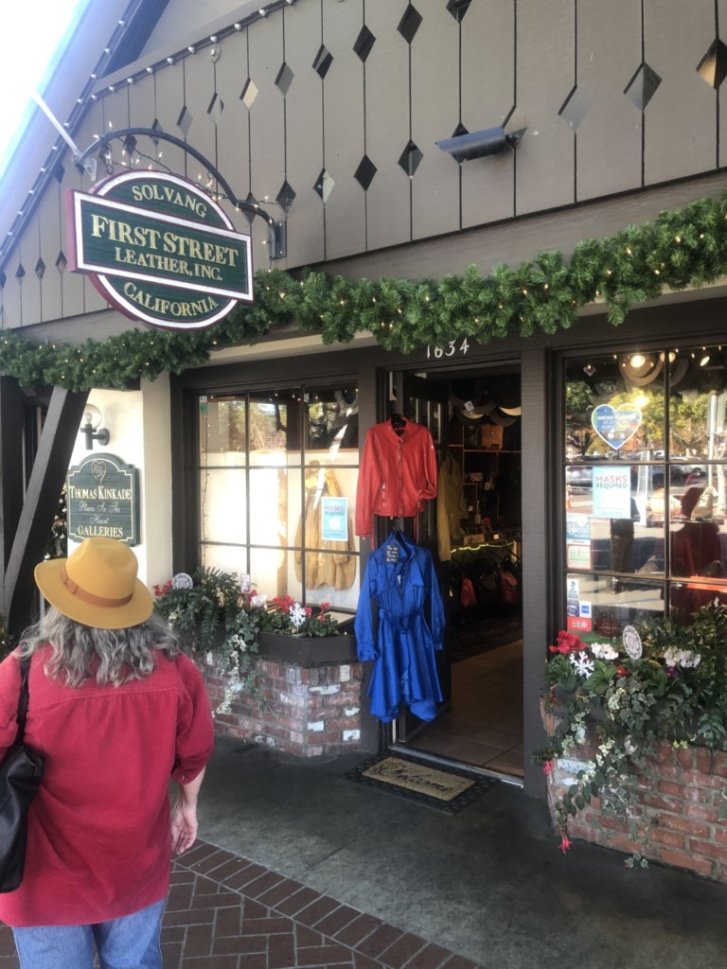
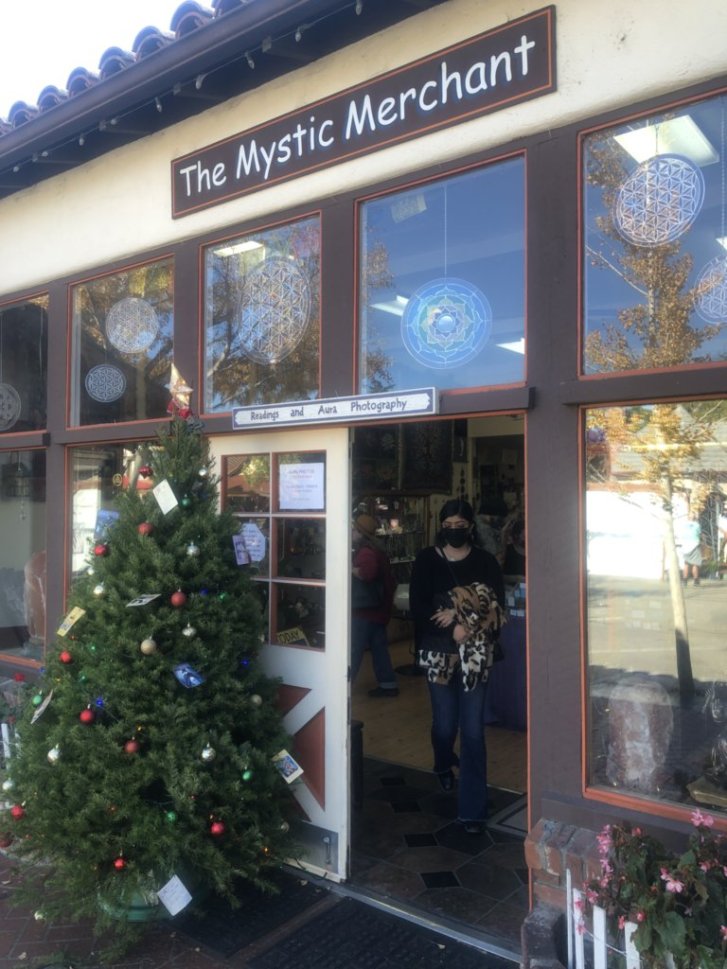
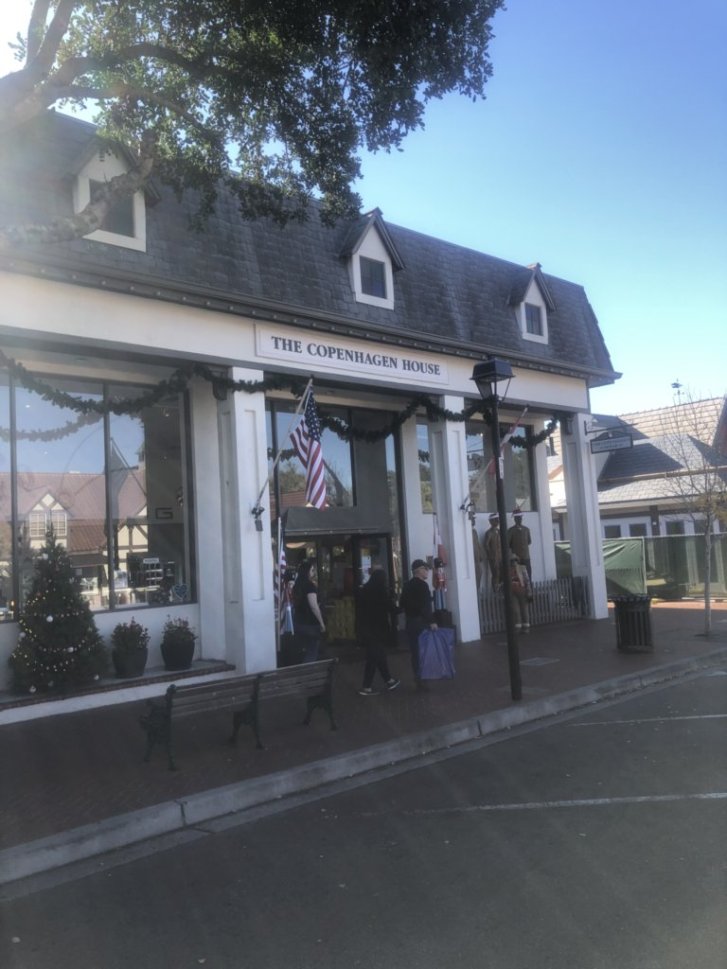

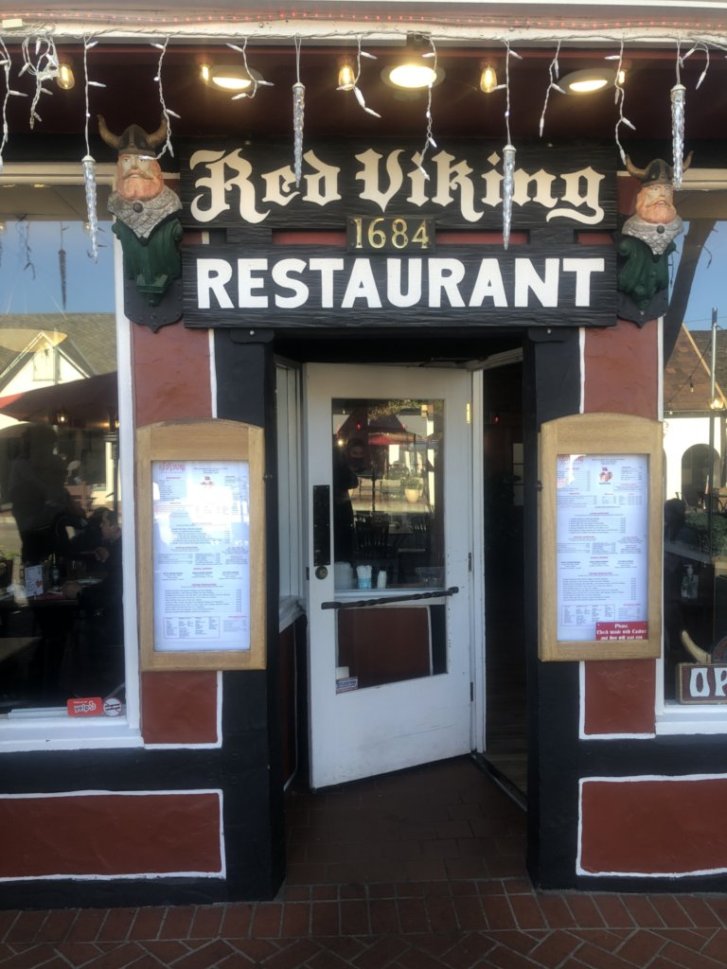
One of our favorite places to eat 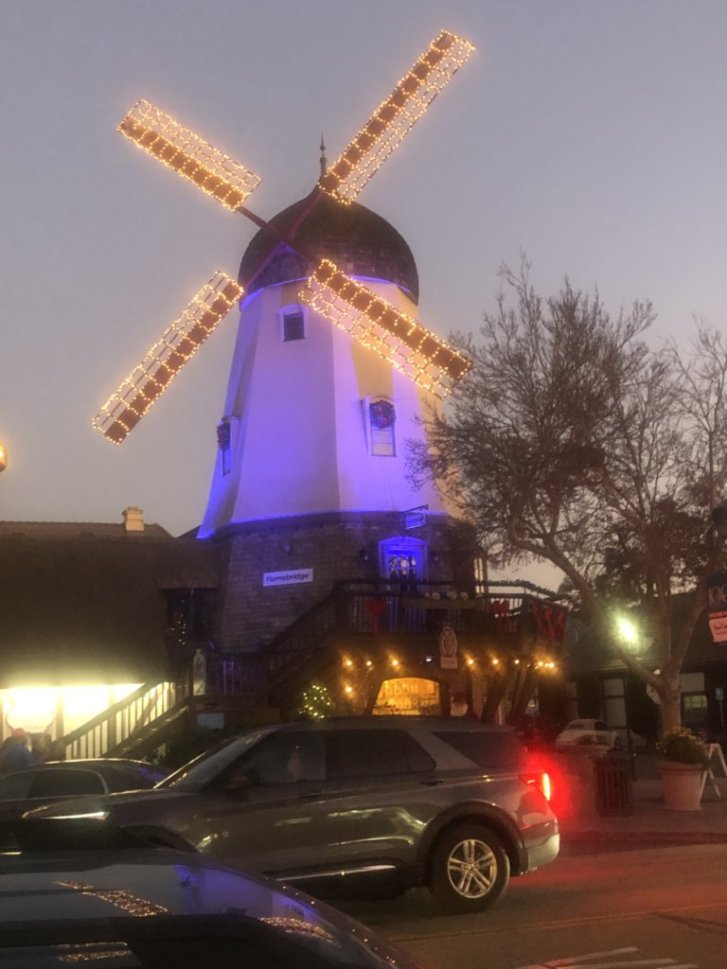
Visit Ostrich land, USA. While clearly not Danish, this attraction is a pleasant and unexpected surprise located on Hwy 246 between Buellton and Solvang. It is a wildlife refuge, home to ostriches and emus. You can get up close and personal with the birds and visit their souvenir shop.
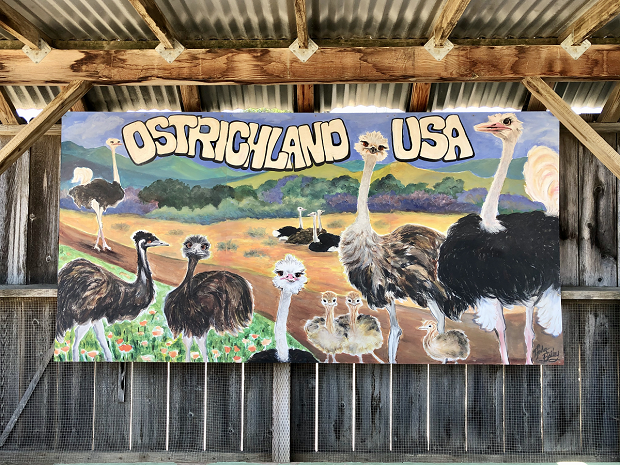
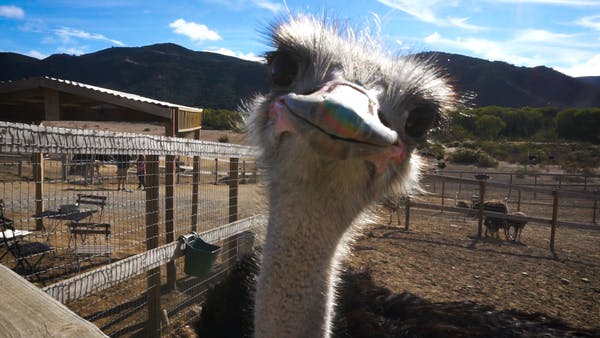
Go wine tasting, well duh! There are over 100 vineyards in the area and almost two dozen tasting rooms in town. If you go the vineyard route, you can take a tour and leave the driving to someone else. When we were there recently, we happened to go on a Sunday. We were ready to start a mini tasting tour around 4:00 but, it turns out, that’s when the rooms start closing on Sundays. Oh well, material for a future blog.
Make sure to stop in at one, or two, or all five of the Danish bakeries. They are Olsen’s Danish Village Bakery, Mortensen’s Danish Bakery, Danish Mill Bakery, The Solvang Bakery, and Birkholm’s Bakery and Café. Each one gets four and a half stars out of five on TripAdvisor. This trip we stopped in at the Danish Mill Bakery and I chatted with one of the counter girls there. The bakery had been around since 1960, with the son taking it over from the father. After 60 years as a family business, it was sold in 2020. According to the girl, it was a combination pandemic and the son decided he wanted to retire. She said everything there is baked on site, as I am sure is the case with the other bakeries as well.
If the outdoors is your thing, explore one of the parks in the area. Hans Christian Andersen Park is a perfect place to let kids burn off energy. It includes a skate park, a rock-climbing wall, and musical instruments. Sunny Fields Park has a central castle with tunnels, walkways, and slides. Solvang Park is a small park located at the center of town. It’s an ideal location and the center of a lot of activity, especially during the holidays. Take a hike to Nojoqui Falls through a forest of laurel and oak trees leading up to the 80-foot-high waterfall. The hike is less than a mile round trip and easy on the legs. Also under the banner of things to do outdoors, Solvang boasts four golf courses. I’m not much of a golfer but for someone that is, I am told they are worth checking out.
Fans of the movie “Sideways” should recognize a lot of location shots in Solvang. The movie was shot almost entirely on location in the Santa Ynez Valley, in and around Solvang and Los Olivos. Tour many of the locations where the film was shot.
It seems as though there is always something going on in the Santa Ynez Valley. Sometimes it’s not where to go in Solvang but when to go. The town leadership has put together a diverse calendar of events to attract tourists from all over the world. That’s also one of the interesting things about Solvang when walking around and eavesdropping on different conversations. On a typical weekend, you will probably hear conversations in half a dozen different languages. Anyway, here is a list of some of the more interesting events going on, not only in Solvang, but in the Santa Ynez Valley this coming year. Everything is listed in chronological order except for the first event.
That would be the 85th annual Solvang Danish Days. I lied to you a little bit before. The Solvang Danish Days was originally established in 1936 to celebrate the town’s silver anniversary. It was such a huge success that it was continued every year after that until it was canceled in 1959 and 60. This was primarily because the event had outgrown the town’s ability to handle the influx of people. For a town with a population of less than 1,500 at the time, it was attracting 10,000 additional party goers from the outside. Over that two year period they added the facilities to handle the additional foot and restroom (sewage being one of the major issues) traffic. The town brought the celebration back in 1961, which was, coincidentally, it’s golden anniversary. It has been a fixture during the month of September ever since. solvangdanishdays.org
March will see the 39th annual SCOR Solvang Century. It is a bike ride through the Santa Ynez Valley, starting in Solvang, with courses of 25, 50, 70, or 100 miles. There is also the Solvang Prelude bike ride, usually held in November, and also put on by SCOR. This ride offers 25-mile and 50-mile bike rides. Both events are pretty cool because you get to ride through the valley and the route is closed to automobile traffic. I rode the prelude three or four times in the 90s. Due to COVID they suspended the Century in 2021 with no mention of 2022 but they did move the Prelude to December. If you are interested in the event check back on the link regularly for updates. bikescor.com
In May, Buellton will host the 9th Annual Brewfest. It will include samples from over 50 local breweries, wineries, and distilleries. There will also be live entertainment, food trucks, and a mega-sized beer pong! buelltonbrewfest.com
Also in May, the Alisal Guest Ranch BBQ Bootcamp. I love to eat and cook BBQ so this one really piques my interest. There will be in house and guest experts teaching all things barbecue in the three-day event, which is held again in October. This one is a little bit pricey but it does include three days lodging at Alisal Ranch with all meals, workshops, and wine tasting included in the cost. (805)693-4208 alisal.com
Another May event is the Santa Barbara Wine Country Half Marathon. The 13-mile course starts in downtown Santa Ynez, goes through Los Olivos, and ends in Solvang. Running a marathon used to be on my bucket list. These days, I would be satisfied with a half marathon, but it’s not going to be this year. At the conclusion of the race there will be a wine and music festival held in Solvang Park. That, I think I could handle. destinationraces.com
The Los Olivos Jazz and Olive Festival will be in June. There will be wines paired with food prepared by over thirty chefs. And, of course, plenty of olives. jazzandolivefestival.org
In June there is another bike ride, this one not affiliated with SCOR. The Wine Country Bike Trek will offer courses of 20, 30, 50, or 100-miles through the Santa Ynez Valley. syvphp.org
In August there is Wine and Fire. This one is going to be a little pricey also. It’s a three-day event with an opening party Friday night followed by a weekend of seminars, wine tasting, and food pairing. staritahills.com
Another event slated for August is the Wheels and Windmills Car Show in Solvang. Three hundred vintage vehicles will line the streets. This one definitely has my interest. I’ve got a ‘74 Chevy Nova that I am tempted to drive to that. (805)688-6112 wheelsnwindmills.com
In September there is the Buellton Wine and Chili Fest. Another one that has caught my interest. There will be competitions for chili and salsa prepared by different chefs and, of course, wine and beer tasting. Wine tasting seems to be a theme here. I don’t know if that’s me or if it’s the Santa Ynez Valley. (805)688-7829 buelltonwineandchilifestival.com
Those are the highlights. There’s plenty more to do if you want to go onto the visitor websites for any of the six towns or the Santa Ynez Valley. Everything is capped off in December with the Solvang Julefest. The other little towns are also putting on various festivals and Christmas extravaganzas, but the Julefest in Solvang is the big one. It lasts the entire month of December and includes visits from Santa, a parade, a Christmas pageant at the intimate Solvang Festival Amphitheater, a tree lighting ceremony, open houses, extended hours downtown, and much more. solvangjulefest.org
And that is it. I think this is my longest blog so far. I apologize for that but there was a lot of information to give out. I hope you found this and the preceding blog interesting. If you’ve never been to Solvang, I hope this gives you a reason to go. If you’ve been there before, I hope it gives you a reason to return. My wife and I traditionally go in December because of the Julefest. I still remember Efrem Zimbalist Jr, you older folks will know who he is, reading “Twas the night before Christmas” at the amphitheater as part of the Christmas pageant. Apparently, he lived in Solvang for many years after he retired from acting, until his death a few years ago. His daughter, Stephanie (Remington Steele for you slightly younger folks. Pierce Brosnan anyone?), still lives there. I have visited at other times of the year, but it has been a while. This year I am looking forward to some of the mentioned events and if any of them are particularly fun or interesting you can be sure that you will hear about them. This is my last blog before Christmas, so I hope it finds you healthy and wealthy, and every one of you has a Merry Christmas and a happy holiday. Here’s a little preview for next week. I’m trying to come up with something for my next blog called “The 12 Days of Christmas, a Landlord’s Perspective.” Ought to be funny. Until then, like I always say, swing for the fences.

